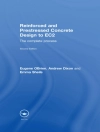
Available as an e Book only.Subsurface wetlands are well suited for on-site applications because they provide odor and vector control and they mitigate public access issues (U.S. EPA, 1993). Artificial subsurface wetlands are typically designed with an inert rock medium, can be either planted or unplanted, and are designed so that the water flows below the surface of the wetlands through the porous medium. The medium provides a surface area for the growth of bacterial films but inhibits the carbon cycling from plant debris because the packing material prevents the plant debris from reaching the water. As a result, subsurface wetlands are only marginally successful at removing nitrogen from wastewater. The nitrogen removal that does occur is the result of plant assimilation and microbial denitrification that utilizes any remaining carbon source in the influent and from plant decay (Kadlec and Knight, 1996). To increase the denitrification performance, an alternative carbon source is required. Gersberg et al. (1983) demonstrated that the addition of carbon, in the form of methanol, stimulated bacterial denitrification and increased nitrate removal efficiencies to 95%. Based on previous research, it has been found that a variety of organic solids can be used simultaneously as media and as a carbon source to support the denitrification process. These include plant biomass (Gersberg et al., 1983), cotton burr and mulch compost (Su and Puls, 2007), wheat straw (Aslan and Turkman, 2003), sawdust (Robertson and Cherry, 1995; Schipper et al., 1998), and woodchips (Healy et al., 2005; Robertson et al., 2009). Schipper et al. (1998) demonstrated that porous groundwater treatment walls amended with sawdust were successful in removing nitrate from contaminated groundwater. Robertson et al. (2005) demonstrated that the proprietary Nitrex filters, which utilize a nitrate reactive material, produced septic tank effluent nitrate removal rates of up to 96%, remaining effective for at least five years, but removal rates were diminished during the winter months. The temperature of the water in a wetland system can significantly affect the rate of denitrification (Kadlec and Knight, 1996). The use of a readily available organic medium in a constructed subsurface wetland as a method for denitrification of nitrified septic tank effluent has not been investigated.











